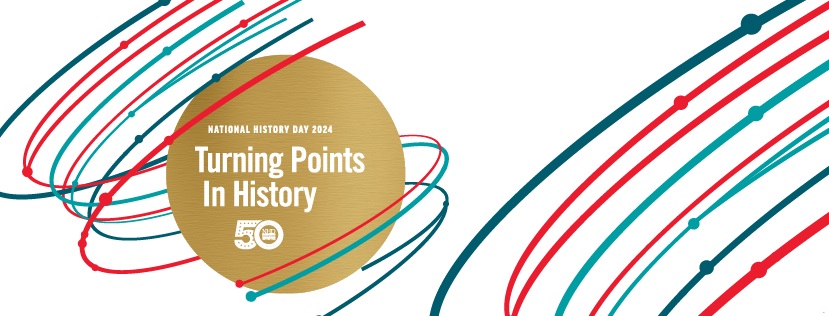History Day, Pennsylvania Standards, and the PSSA Reading and Math Anchors
PA Standards for History
By doing history, students become engaged, empowered and excited learners. As students participate in the research process, they practice the historical analysis and skills listed in the Pennsylvania Standard for History 8.1 Historical Analysis and Skills Development including:
- Understanding, analyzing and evaluating chronological thinking, sequential order and distinguishing past, present and future time
- Understanding, analyzing and evaluating continuity and change and the context for events
- Explaining, analyzing, interpreting, synthesizing and evaluating historical sources and mathematical and visual data including maps, graphs, and tables
- Explaining, analyzing, interpreting, synthesizing and evaluating historical sources for multiple perspectives
- Explaining, analyzing and evaluating the fundamentals of historical interpretation including differentiating fact from opinion, multiple points of view, cause and effect, illustrations in historical stories, authorís or sourceís point of view, and the central or main idea
- Describing, explaining, analyzing, interpreting, synthesizing and evaluating historical research such as historical events, facts, folklore, fiction, historical questions, primary and secondary sources and performance or project based assessment including group projects, skits and plays, History Day projects, mock trial, speeches, debates, and research papers.
PA Standards for Reading, Writing, Thinking and Listening
Learning and Reading Independently
- Understand the meaning of an apply key vocabulary across the various subject areas
- Demonstrate after reading understanding and interpretation of both fiction and nonfiction texts including public documents
- Make, and support with evidence, assertions about texts; compare and contrast texts using themes, settings, characters and ideas; make extension to related ideas, topics or information; assess the validity of the document based on context; analyze the positions, arguments and evidence in public documents; and extend ideas found in the text.
Reading Critically in All Content Areas
- Read and understand essential content of informational texts and documents in all academic areas
- Differentiate fact from opinion across a variety of texts; distinguish between essential and nonessential information across a variety of sources; identify bias and propaganda where present; draw inferences based on a variety of information sources; and use teacher and student established criteria for making decisions and drawing conclusions.
Types of Writing
- Write short stories, poems and plays**
- Write multi-paragraph and/or complex information pieces including essays, research papers, interviews, etc.
- Use precise language and specific detail; develop a problem and solution or cause and effect; use relevant graphics (maps, charts, graphs, tables, illustrations, photographs); use primary and secondary sources.
- Write persuasive pieces.
- Maintain a written record of activities, course work, experience, honors and interests.
Quality of Writing
- Write with a sharp, distinct focus; identify topic, task and audience; establish and maintain a single point of view.
- Write using well-developed content appropriate for the topic.
- Gather, determine validity and reliability of, organize and analyze information; employ the most effective format for purpose and audience; write fully developed paragraphs that have details and and information specific to the topic and relevant to the focus.
- Write with controlled and/or subtle organization
- Sustain a logical order within sentences and between paragraphs; establish a topic and purpose in the introduction; include an effective introduction and conclusion.
Revise writing to improve style, word choice, organization, rethinking logic and rechecking central idea, content, paragraph development, level of detail, style, tone and word choice;
- Editing using the conventions of language
- Present and/or defend written work for publication when appropriate.
Speaking and Listening
- Listen to others.
- Speak using skills appropriate to formal speech situations.
- Contribute to discussions.
- Participate in small and large group discussions and presentations.
- Use media for learning purposes.
- Create a multi-media presentation for display or transmission**
Research
- Select and refine a topic for research.
- Locate information using appropriate sources and strategies.
- Determine valid resources for research the topic, including primary and secondary sources; evaluate the importance and quality of the sources; select essential sources; use tables of content, indices, key words, cross-references and appendices; and use traditional and electronic search tools.
- Organize, summarize and present the main ideas from research.
- Take notes from sources relevant to the topic; develop a thesis statement based on research; give precise, formal; credit for othersí ideas, images or information using a standard method of documentation; use formatting; and techniques to aid reader understanding.
PSSA Anchors in Reading and Math
"The Assessment Anchors are one of the many tools the Pennsylvania Department of Education has developed to better align curriculum, instruction and assessment practices throughout the stateÖ.The Assessment Anchors clarify the standards assessed on the PSSA and can be used by educators to help prepare their students for the PSSA. We used the metaphor of an "anchor" because we wanted to signal that the Assessment Anchors would anchor both the state assessment system and the curriculum/instructional practices in schools."
"The Assessment Anchors were written with the intent of having interdisciplinary discussions about how the Mathematics and Reading Anchors can be taught in Science, Social Studies, the Arts and other content areas. The intent of the Anchors is not to narrow the curriculum, but to focus teachers on the essential skills and knowledge in Reading and Mathematics that must be taught across the curriculum, given the limited amount of time teachers have with students."
History Day projects** require student to practice the following mathematics and reading "anchor" skills:
Mathematics
- Develop and/or evaluate inferences and predictions or draw conclusions based on data or data displays.
- Make predictions using data displays and probability.
- Estimate or calculate to make predictions based on a circle, line or bar graphs.
Reading
- Demonstrate the ability to understand and interpret nonfiction text including informational, editorials, public documents, autobiographies, biographies and essays appropriate to grade level.
- Identify the meaning of vocabulary from various subject areas.
- Make inferences and draw conclusions based on text.
- Identify main ideas, relevant details and generalizations.
- Retell or summarize the major points or procedures of the text.
- Check the validity and accuracy of information obtained from reading by differentiating fact from opinion.
- Evaluate text organization and content to determine the authorís purpose according to the authorís thesis and logic, headings, graphics and charts to derive meaning.
- Describe, analyze, and evaluate the following within or across nonfiction texts: content and topic.
- Differentiate fact from opinion.
- Analyze positions or arguments for evidence of statements of fact and opinion.
- Distinguish between essential and nonessential information within or across texts.
- Identify bias and propaganda techniques where present.
- Analyze the effectiveness of bias and propaganda techniques where present.


